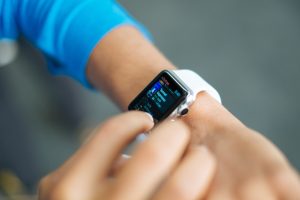| to find out how BHM helps support payers with integration of evidence-based best practices |
 A literature analysis published in the new Nature Partner Journal (npj) Digital Medicine reviewed 27 randomized control studies focused on wearable biosensors and found no statistically significant impact on factors like body mass, waist circumference, body fat percentage, and systolic and diastolic blood pressure. The study adds to a growing body of research indicating that clinical evidence has struggled to keep pace with the hype surrounding wearables.
A literature analysis published in the new Nature Partner Journal (npj) Digital Medicine reviewed 27 randomized control studies focused on wearable biosensors and found no statistically significant impact on factors like body mass, waist circumference, body fat percentage, and systolic and diastolic blood pressure. The study adds to a growing body of research indicating that clinical evidence has struggled to keep pace with the hype surrounding wearables.
Wearable biosensors—noninvasive devices that automatically transmit data to a web portal or mobile app for patient self-monitoring or health provider assessment—have been touted as a means to reduce healthcare utilization, decrease costs, generate research data and increase physician satisfaction.
The analysis found that these devices did show early promise in improving outcomes for certain conditions:
- Obstructive pulmonary disease
- Parkinson’s disease
- Hypertension
- Low back pain
The interventions targeted patients who were overweight or had heart disease, lung disease, chronic pain, stroke or Parkinson’s. The devices studied included physical activity trackers, blood pressure monitors, electrocardiograms, electronic weight scales, accelerometers (devices measuring acceleration) and pulse oximeters (oxygen saturation monitors), among others. These devices were embedded in everything from watches and belts to skin patches and textiles.
A statistical analysis of the relevant literature revealed that remote patient monitoring resulted in no significant impact on any of the reported clinical outcomes. Certain types of interventions worked best, including efforts grounded in social science models and established care guidelines and those that used personalized coaching.
Lack of data may be the culprit. Of more than 4,000 studies the authors initially reviewed, fewer than 1 percent were eligible to be included in the study, and only 16 were considered high-quality research. The authors found very few randomized controlled trials for each of the clinical outcomes analyzed, and studies varied significantly in terms of the types of devices used, the populations studied and the interventions tested.
to find out how BHM helps support payers with integration of evidence-based best practices






